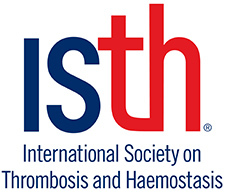World Thrombosis Day Empowers People Around the World to Recognize and Help Prevent Life-Threatening Blood Clots
In Its Sixth Year, the Global Campaign Highlights Ways to Reduce the Impact of a Condition that Contributes to One in Four Deaths Worldwide
CHAPEL HILL, North Carolina, Oct. 9, 2019 /PRNewswire/ -- On October 13, the World Thrombosis Day campaign shares an important message: patients, regardless of where they live, should be able to to expect that their hospital stay is safe and that the risk of adverse events such as thrombosis is minimized. Thrombosis is the formation of potentially deadly blood clots in an artery or vein. With one in four deaths due to thrombosis-related conditions each year, the campaign encourages health systems to have risk assessment protocols in place and patients to be informed and empowered to ask questions regarding their care.
Thrombosis can trigger a host of life-threatening medical conditions, including heart attack, stroke and venous thromboembolism (VTE). VTE occurs when one or more blood clots form in a deep vein, most often in the leg (deep vein thrombosis). The clot can travel in the circulation and lodge in the lungs (a condition known as pulmonary embolism, PE). Approximately 10 million cases of VTE occur annually. This preventable condition, which can be fatal, is overlooked as a major public health crisis.
"Hospital-acquired blood clots are a global problem," says Prof. Beverley Hunt, OBE, chair of the World Thrombosis Day Steering Committee. "In a major study sponsored by the World Health Organization (WHO), it accounted for more deaths and disability in low- and middle-income countries than other patient safety issues, including hospital-acquired pneumonia, catheter-related bloodstream infections and drug errors. Because of this, the World Thrombosis Day campaign places a global spotlight on hospital-acquired blood clots to raise awareness of this common and under-recognized preventable health issue."
Sixty percent of blood clots are linked to hospitalization. In England, however, Dr. Hunt points out that figures have been falling over the last decade thanks to mandated VTE prevention measures instituted in hospitals by the National Health Service (NHS). Since 2010, England has seen a 15.4 percent reduction in deaths within 90 days after hospital discharge.
While some hospitals and healthcare systems have adopted similar measures for preventing VTE, that is not true everywhere. This means patients must be proactive in speaking with their care providers about the steps they can take to identify and prevent blood clots. During their stay at the hospital and after being discharged, patients should be alert for signs and symptoms of blood clots, such as leg pain and tenderness, redness and swelling, shortness of breath, rapid breathing, chest pain and coughing up blood.
Thrombosis survivor Scott Shields of Arlington, Virginia, says, "A car crash when I was 32 left me with multiple life-threatening injuries. But when I was recovering in the hospital, I developed a deep vein thrombosis (DVT) in my left thigh. Because I was communicating with my doctors daily during physical therapy sessions, I was able to bring their attention to this new, sudden pain in my leg, and get rapid treatment."
As Shields indicates, an open line of communication with healthcare providers is essential, and patients should feel empowered to advocate for their own care.
Hospitalized patients should take the following steps to help assess their risk and prevent VTE:
- Ask your provider for a VTE risk assessment, a tool or questionnaire that gathers information about age, medical history, medications, and specific lifestyle factors to discern a patient's potential risk for developing blood clots.
- Ask about treatment options like compression stockings or anti-clotting medication to help prevent VTE.
- Follow prescribed treatments, including medication, as ordered, and ask questions if you have any.
- Stay active and moving as much as possible while in the hospital and after discharge.
For more information about blood clots, visit the World Thrombosis Day website. World Thrombosis Day is on October 13 each year and is led by the International Society on Thrombosis and Haemostasis (ISTH).
About World Thrombosis Day
Launched in 2014 and held annually on 13 October, World Thrombosis Day (WTD) aims to increase public, healthcare professional and health care systems' awareness of thrombosis and, ultimately, to reduce deaths and disabilities from thromboembolic disease through a greater awareness of its causes, risk factors, signs and symptoms, and evidence-based prevention and treatment. WTD's mission supports the World Health Assembly's global target of reducing premature deaths by non-communicable disease by 25 percent by 2025, as well as the WHO global action plan for the prevention and control of non-communicable diseases in the 2013-2020 timeframe. Visit www.worldthrombosisday.org for more information and to get involved.
About the ISTH
Founded in 1969, the ISTH is the leading worldwide not-for-profit organization dedicated to advancing the understanding, prevention, diagnosis and treatment of thrombotic and bleeding disorders. ISTH is an international professional membership organization with more than 5,000 clinicians, researchers and educators working together to improve the lives of patients in more than 98 countries around the world. Among its highly regarded activities and initiatives are education and standardization programs, research activities, meetings and congresses, peer-reviewed publications, expert committees and World Thrombosis Day on 13 October. Visit ISTH online at www.isth.org.







Share this article